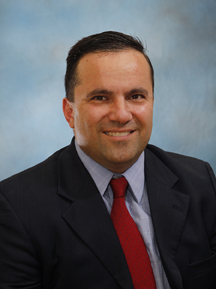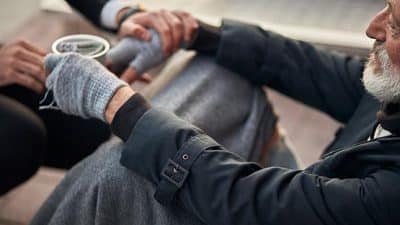
He is the first physician in Virginia to implant the new device.
The new pacing technology, developed by St. Jude Medical, consists of two parts: the Quartet Left Ventricular Quadripolar Pacing Lead and the Unify Quadra cardiac resynchronization therapy and defibrillator (CRT-D) generator/battery. The Unify Quadra works with the recently FDA-approved Quartet pacing lead.
A CRT-D is a defibrillator and heart rhythm pacing device used to treat patients with heart failure symptoms, reduced heart muscle contraction and abnormal or slow electrical activity. The CRT-D, through electrodes placed on pacing leads, paces the two ventricles on the heart at the same time, synchronizing the heart’s electrical and muscle function.
Until now, all CRT-type devices have had a left ventricular pacing lead with only one or two pacing electrodes, explained Dr. VerNooy, who specializes in procedures to correct heart rhythms. The new Quartet pacing lead helps doctors better manage heart failure because it has four pacing electrodes. By having four electrodes, the Quartet lead provides more options for a physician to regulate heartbeat and improve heart function in congestive heart failure patients.
“I am very excited to be the first physician in Virginia to implant this new device,” Dr. VerNooy said. “It will be an important new option in realizing even better success from these cardiac resynchronization procedures. The patient did extremely well and likely will be able to see an improvement in his quality of life from before the procedure. The patient may even live longer. This new pacing lead is a clear improvement in how this resynchronization pacing technology can treat patients with heart failure.”
Another advantage of the Quartet is it may reduce the need for a physician to reposition the pacing lead to deliver the correct and ideal therapy for congestive heart failure.
The ideal pacing position may change in a patient’s heart over time, Dr. VerNooy explained. Having more options to electronically change the configuration after surgery may improve the benefit of the therapy.
“Patients with this new device are much more comfortable knowing they don’t have to make another trip to the hospital if there is a placement complication,” he said. “With two-electrode systems, patients may need to undergo multiple procedures to get the left ventricular lead positioned correctly. This can result in increased radiation exposure, risk of infection and more medical costs.”
The four-electrode pacing system is expected to become an industry standard because it may improve the options to deliver pacing therapy effectively and reduce the impact of complications. These improvements may result in lower healthcare costs.
“We’ve had this pacing therapy for congestive heart failure for almost a decade, but this type of pacing lead is new. It’s not a new device, but a tweak to a proven device to make it even better.” Dr. VerNooy said. “I believe this will be an important tool to further help patients with congestive heart failure.”










